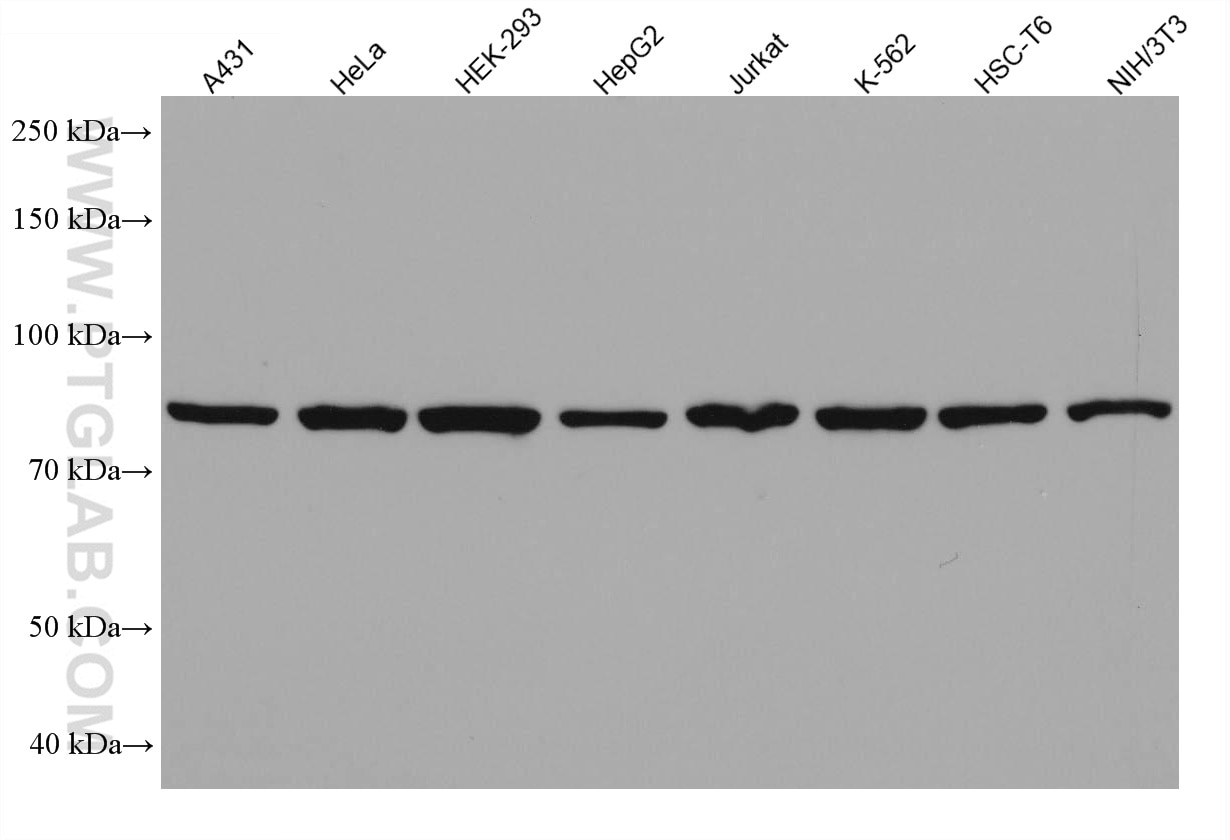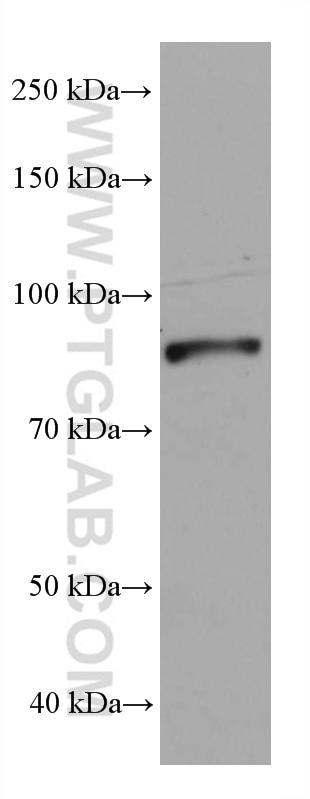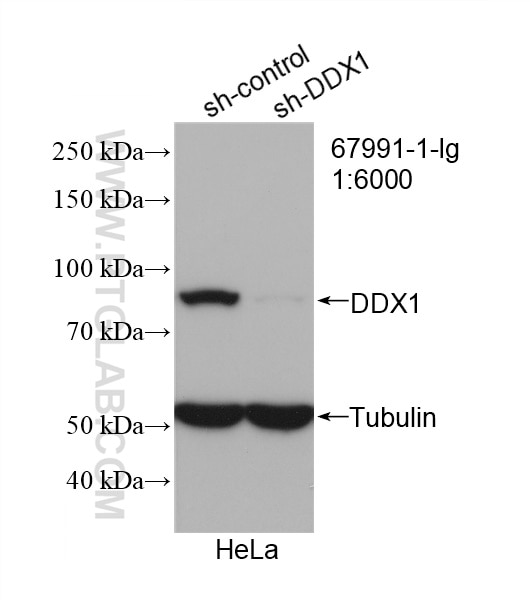- Featured Product
- KD/KO Validated
DDX1 Monoclonal antibody
DDX1 Monoclonal Antibody for WB, ELISA
Host / Isotype
Mouse / IgG1
Reactivity
Human, mouse, rat
Applications
WB, ELISA
Conjugate
Unconjugated
CloneNo.
1G10G4
Cat no : 67991-1-Ig
Synonyms
Validation Data Gallery
Tested Applications
| Positive WB detected in | A431 cells, 4T1 cells, HeLa cells, HEK-293 cells, HepG2 cells, Jurkat cells, K-562 cells, HSC-T6 cells, NIH/3T3 cells |
Recommended dilution
| Application | Dilution |
|---|---|
| Western Blot (WB) | WB : 1:5000-1:50000 |
| It is recommended that this reagent should be titrated in each testing system to obtain optimal results. | |
| Sample-dependent, Check data in validation data gallery. | |
Product Information
67991-1-Ig targets DDX1 in WB, ELISA applications and shows reactivity with Human, mouse, rat samples.
| Tested Reactivity | Human, mouse, rat |
| Host / Isotype | Mouse / IgG1 |
| Class | Monoclonal |
| Type | Antibody |
| Immunogen | DDX1 fusion protein Ag16774 |
| Full Name | DEAD (Asp-Glu-Ala-Asp) box polypeptide 1 |
| Calculated Molecular Weight | 740 aa, 82 kDa |
| Observed Molecular Weight | 82 kDa |
| GenBank Accession Number | BC012132 |
| Gene Symbol | DDX1 |
| Gene ID (NCBI) | 1653 |
| RRID | AB_2918740 |
| Conjugate | Unconjugated |
| Form | Liquid |
| Purification Method | Protein G purification |
| Storage Buffer | PBS with 0.02% sodium azide and 50% glycerol pH 7.3. |
| Storage Conditions | Store at -20°C. Stable for one year after shipment. Aliquoting is unnecessary for -20oC storage. 20ul sizes contain 0.1% BSA. |
Background Information
DDX1 is a DEAD box protein, which is putative RNA helicases with a characteristic asp-glu-ala-asp (DEAD) box motif. DEAD box proteins involve in translation initiation, splicing, and ribosome and spliceosome assembly by altering RNA secondary structure. As a RNA helicase, DDX1 has a role in RNA clearance at DNA double-strand breaks (DSBs), thereby facilitating the template-guided repair of transcriptionally active regions of the genome.
Protocols
| Product Specific Protocols | |
|---|---|
| WB protocol for DDX1 antibody 67991-1-Ig | Download protocol |
| Standard Protocols | |
|---|---|
| Click here to view our Standard Protocols |




